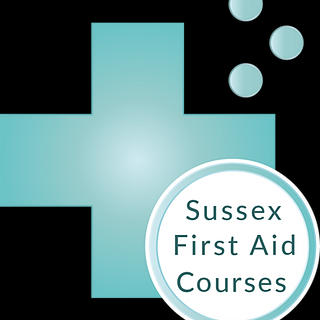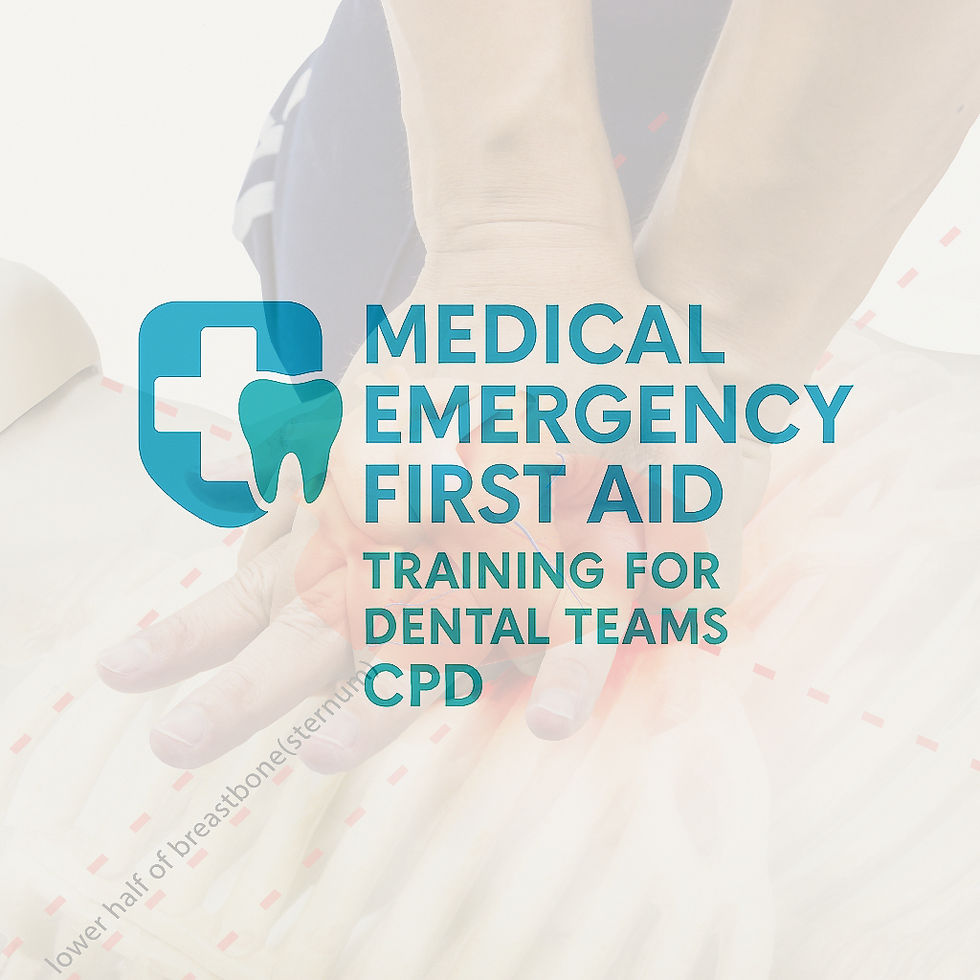Management of Syncope (Fainting / Passing Out) in the Dental Practice
- Admin
- Aug 30
- 4 min read
Updated: Sep 1

Medical Emergency Guidelines for Dental Teams By Garry Perkins, HCPC Paramedic
The following guidance draws upon established protocols from the UK Resuscitation Council, NICE, BNF Dental Advisory Group, UK Ambulance JRCALC, GDC, and UK First Aid guidelines. These recommendations have been developed by Garry Perkins—an HCPC-registered paramedic with extensive experience teaching within dental practice settings and serving on the frontline—to offer dental teams a clear, practical, and effective framework for managing medical emergencies in the dental environment.
This is not intended to be a comprehensive clinical guideline covering all aspects of emergency care. Instead, it provides a realistic and workable approach tailored to the dental setting, where emergencies can be both challenging and unpredictable.
While the public may expect a high level of response during a medical emergency, it is important to recognise that dental professionals are not expected to operate beyond their scope of practice. At every stage of an emergency, dental team members should refer to current UK medical guidelines, seek appropriate advice, and—when necessary—call 999 or refer the patient for further care or investigation.
Fainting, medically known as syncope, is a sudden and temporary loss of consciousness caused by an insufficient blood supply to the brain. While often harmless, fainting can be distressing for both the patient and the dental team — and in some cases, it may point to a more serious underlying condition.
What Happens During a Faint
When a person faints:
Blood vessels in the lower body dilate → blood pools in the legs and arms.
Heart rate decreases due to stimulation of the vagus nerve.
Blood pressure drops → less oxygenated blood reaches the brain.
This lack of oxygen leads to brief unconsciousness. The term vasovagal syncope describes this process, where increased vagal activity and reduced sympathetic activity combine to slow the heart and lower blood pressure.
Faints are common — around 50% of people will experience at least one in their lifetime.
Common Triggers of Fainting
In dentistry, the most common triggers are stress, anxiety, and pain. Other triggers include:
Pain or fright
Lack of food or fluid
Emotional stress
Long periods of inactivity (sitting or standing)
Exposure to heat
Warning Signs and Symptoms
Before losing consciousness, patients may show:
Feeling hot and sweaty
Pale, clammy skin
Breathlessness
Light-headedness or dizziness
Blurred vision, rolling eyes, or muffled hearing
Slow pulse (bradycardia)
Temporary loss of bladder control (can occur during a faint — reassure the patient)
Brief twitching or shaking (convulsive syncope). If this lasts longer than a few seconds, consider seizure, cardiac arrest, or other causes.
A faint typically lasts only seconds, with recovery beginning once blood flow to the brain is restored. Patients may continue to feel weak, shaky, or unwell afterwards.
Management of Syncope
1. Positioning
Lay the patient flat, with legs elevated above heart level.
Pregnant patients: position on their side to prevent restricted blood flow.
2. Oxygen Therapy
Use high-flow oxygen (15 L/min via non-rebreather mask) only if SpO₂ <94% or the patient is breathless/cyanosed.
Remember: oxygen is often overused in simple fainting.
3. Monitoring
If unconscious: open the airway and check breathing for up to 10 seconds.
If breathing normally → place in recovery position and call an ambulance.
If not breathing normally → call for help, dial 999, start CPR, and attach the AED.
4. Recovery
Allow the patient to rest flat for several minutes.
Reassure and explain what happened (patients often feel embarrassed).
Sit them up slowly when ready.
Offer plain water — avoid glucose unless hypoglycemia is suspected.
Consider checking blood glucose levels.
Take a full medical history and document the event.
If in doubt, unsure, unable to discharge safely then refer your patient.
Prevention in the Dental Setting
Encourage patients to eat and hydrate before appointments.
Keep the surgery cool and well-ventilated.
Reassure patients and explain procedures clearly to reduce stress.
Stop treatment immediately if the patient reports feeling dizzy, hot, or light-headed.
Consider sedation for highly anxious patients.
🚩 Red Flags in Fainting
Most faints are simple vasovagal episodes, but some features suggest a more serious cause and require urgent medical evaluation:
Fainting during or immediately after exercise
Associated chest pain or palpitations
Family history of sudden cardiac death
No warning signs before collapse
Prolonged unconsciousness (>1–2 minutes)
Recurrent or unexplained faints
Neurological symptoms (confusion, weakness, speech or vision changes)
Fainting while lying down
Serious injury from the fall
Older patients or those with comorbidities
Loss of bowel control or sudden urge to defecate
Prolonged recovery (>5 minutes)
Top Tips for Dental Teams
Oxygen is not always required — only give if SpO₂ levels <94% or the patient is cyanosed/breathless.
Most patients recover within 2–5 minutes.
Be aware: low blood pressure can cause false SpO₂ readings.
Never walk a patient who feels faint.
Always ask yourself: “Is this really a faint, or something more serious?”
Document all treatment, advice, and give worsening care advice.
Refer to your Medical Emergencies in the Dental Practice Manual at all stages for management.
Key Takeaway
Most faints in dentistry are short-lived and harmless, but recognising the warning signs and managing them promptly is crucial. Always keep an eye out for red flag features, as they may indicate a serious cardiac or neurological emergency requiring urgent care.





Comments